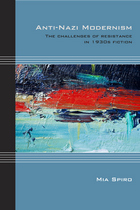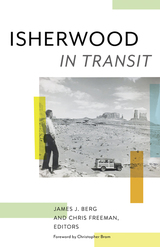

Ding Ling is China’s foremost woman writer, and one of the great survivors in modern Chinese literary history. Iconoclast, feminist, and political activist, Ding Ling began her writing in the late 1920s as a member of the May Fourth generation and continued to write after the Communist Party had established control over all literary activities. She has survived to practice her art through the physical dangers of war, imprisonment, and persecution by two governments.
Yi-tsi Mei Feuerwerker examines Ding Ling’s writings from the startling early stories about young women undergoing crises of love, sex, and identity to her novel on land reform, The Sun Shines on the Sanggan River, which won the 1951 Stalin prize for literature. The unique interest of Ding Ling’s writing lies in the response and resistance to political pressure that is revealed in the sequence of the works. The formal aspects of her fiction, as it undergoes distinctive phases of development, exemplify in precise ways the effects of ideological change on narrative practice. As much as the momentous events of her life, the literary works she produced dramatize the succession of creative dilemmas confronting the modern Chinese writer.
The examination of Ding Ling’s life and works raises pressing questions about the writer’s role and the validity of literature and its hopes for survival in a world of radical political change.

New perspectives on Christopher Isherwood as a searching and transnational writer
“Perhaps I had traveled too much, left my heart in too many places,” muses the narrator of Christopher Isherwood’s novel Prater Violet (1945), which he wrote in his adopted home of Los Angeles after years of dislocation and desperation. In Isherwood in Transit, James J.Berg and Chris Freeman bring together diverse Isherwood scholars to understand the challenges this writer faced as a consequence of his travel.
Based on a conference at the Huntington Library, where Isherwood’s recently opened papers are held, Isherwood in Transit considers the writer not as an English, continental, or American writer but as a transnational one, whose identity, politics, and beliefs were constantly transformed by global connections and engagements arising from journeys to Germany, Japan, China, and Argentina; his migration to the United States; and his conversion to Vedanta Hinduism in the 1940s.
Approaching Isherwood’s rootlessness and restlessness from various perspectives, these essays show that long after he made a new home in California and became an American citizen, Christopher Isherwood remained unsettled, although his wanderings became spiritual and personal rather than geographic.
Contributors: Barrie Jean Borich, DePaul U; Jamie Carr, Niagara U; Robert L. Caserio, Penn State U, University Park; Lisa Colletta, American U of Rome; Lois Cucullu, U of Minnesota; Jaime Harker, U of Mississippi; Carola M. Kaplan, California State U, Pomona; Calvin W. Keogh, Central European U, Budapest; Victor Marsh; Wendy Moffat, Dickinson College; Xenobe Purvis; Bidhan Roy, California State U, Los Angeles; Katharine Stevenson, U of Texas at Austin; Edmund White.
READERS
Browse our collection.
PUBLISHERS
See BiblioVault's publisher services.
STUDENT SERVICES
Files for college accessibility offices.
UChicago Accessibility Resources
home | accessibility | search | about | contact us
BiblioVault ® 2001 - 2024
The University of Chicago Press









